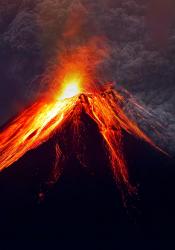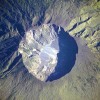Mount Tambora in Indonesia
Mount Tambora is an active volcano on Sumbawa Island, Indonesia. The 1815 eruption of the volcano was the largest eruption since the Lake Taupo (New Zealand) eruption in 181 A.D. Its last recorded eruption was in 1967, although there has been an increase in activity around the volcano since 2011. Related BRANCH Article: Gillen D'Arcy Wood, “1816, The Year without a Summer”
Coordinates
Latitude: -8.247924600000
Longitude: 117.991101000000
Longitude: 117.991101000000


